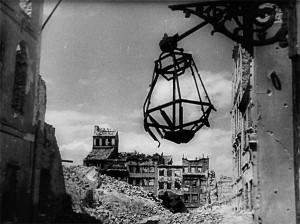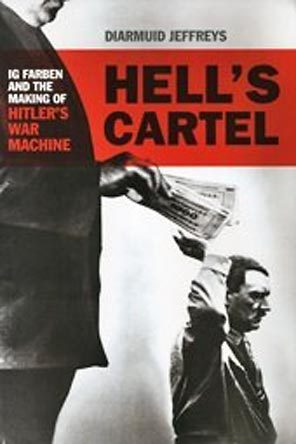Alex Constantine - June 11, 2013
US officials are preparing to unveil 400 pages salvaged from the long-vanished diary of Alfred Rosenberg, a Nazi minister who played a crucial part in Hitler’s extermination of Jews and other minorities during the Second World War.
The pages, found at the US home of an academic, are said to contain fresh insights into meetings between Rosenberg and Hitler, as well as other top Nazi leaders such as Heinrich Himmer and Herman Goering, It also includes new details of the German occupation of the Soviet Union, including plans for mass killings of Jews and other Eastern Europeans. According to a preliminary analysis, the diary will be “an important source of information to historians that complements, and in part contradicts, already known documentation”.
The assessment, prepared by the United States Holocaust Memorial Museum for the US government, states that the documentation is of “considerable importance for the study of the Nazi era, including the history of the Holocaust”. It asserts that a “cursory” analysis of the content had found it to shed new light on key issues relating to the Third Reich’s policy.
It is unclear exactly how Rosenberg’s writings might contradict established historical beliefs about the reign of the Nazis. Further details expected to be released this week at a news conference in Delaware, held by US Immigration and Customs Enforcement, Department of Justice and the Holocaust Memorial Museum.
However the diary of the Nazi minister - a close confidant of Hitler - is known to offer details about tensions within the Nazi high-command. In particular, it contains specifics of the crisis caused by the flight of Deputy Fuhrer Rudolf Hess to Britain in 1941 in a rogue bid to negotiate peace with London. The looting of art across Europe is also discussed, according to the preliminary assessment.
Rosenberg - who was hanged in 1946 following his conviction at the Nuremberg trials - was an early and influential member of the Nazi party, considered to be a principle author of several central Nazi ideologies including its racial theory, persecution of the Jews and territorial expansion.
He held a number of key posts in the Nazi government, directing its foreign affairs department and editing the Nazi newspaper. He also directed the systematic looting of Jewish art and cultural and religious property throughout Europe as head of the Nazi unit Task Force Reichsleiter Rosenberg.
Several of Rosenberg's memos to Hitler were used in evidence during the Nuremburg Trials, where he became one of a dozen senior Nazi officials executed following convictions for crimes against humanity. However the diary, then held by Nuremberg prosecutors, disappeared after the trial.
US officials long suspected that the writings had been smuggled back to America by a Nuremberg prosecutor, Robert Kempner. A German who had escaped to the United States in the 1930s, Mr Kempner was credited with helping uncover the Wansee Protocol - the 1942 agreement of Nazi officials on the coordinated genocide of the Jews known as “the Final Solution”.
Mr Kempner cited a few excerpts from the diary in his memoir, while in 1956 a German historian published entries from 1939 and 1940. But the majority of the diary remained hidden.
Mr Kempner died in 1993 aged 93, and, after a prolonged legal dispute about his papers, the Holocaust Memorial Museum was set to receive them in 1999. However when officials arrived at his home they discovered that many thousands of pages were missing. The FBI opened a criminal investigation and the Holocaust museum went on to recover more than 150,000 documents, including many held by Mr Kempner’s former secretary, then living in the New York state home of an academic named Herbert Richardson.
But the Rosenberg diary remained missing until earlier this year, when the Holocaust museum and an agent from Homeland Security Investigations tracked the diary to Mr Richardson, living near Buffalo.
A compilation of Rosenberg’s recollections from spring 1936 to winter 1944, much of it is written in the Nazi’s own handwriting. Some entries are written on paper torn from a ledger book and others on the back of official Nazi stationery, according to the analysis.
Mr Richardson has so far declined to comment.








